Special Topic: Astronomy Education Beyond The Classroom
Parallel Session
5th Shaw-IAU Workshop on Astronomy for Education
Session timeblocks
Wednesday Nov. 29, 2023
Session A - Part 2: Planetaria, Science Centers and Museums:
UTC: 11 a.m. -
12:30 p.m.
Session C: Amateur astronomy in a school setting:
UTC: 3:30 p.m. -
5 p.m.
Session B - Part 1: When scientists go back to school:
UTC: 5:30 p.m. -
7 p.m.
Session B - Part 2: When scientists go back to school:
UTC: 8 p.m. -
9:30 p.m.
Thursday Nov. 30, 2023
Session B - Part 2, repeated: When scientists go back to school:
UTC: 12:30 p.m. -
2 p.m.
Session C, repeated: Amateur astronomy in a school setting:
UTC: 2:30 p.m. -
4 p.m.
Session A - Part 2, repeated: Planetaria, Science Centers and Museums:
UTC: 6:30 p.m. -
8 p.m.
Session A - Part 1: Planetaria, Science Centers and Museums:
UTC: 8:30 p.m. -
10 p.m.
Friday Dec. 1, 2023
Session B - Part 1, repeated: When scientists go back to school:
UTC: 10 a.m. -
11:30 a.m.
Session A - Part 1, repeated: Planetaria, Science Centers and Museums:
UTC: 12:30 p.m. -
2 p.m.
Astronomy is a multidisciplinary field of science, a characteristic that facilitates it to be explored in the classroom as it can be addressed through multiple perspectives. This is no surprise that astronomy is easily and therefore commonly explored in environments beyond the classroom. Within this session, we will explore the rich variety of ways and places where astronomy is used for educational purposes beyond the edutainment factor, such as planetaria, science centers and museums or in other settings such as clubs or youth groups. In addition, we will learn from initiatives developed by professional and amateur astronomers that bring astronomy to school settings to complement the curricula.
Schedule
-
What do people really talk about inside the dome?A detailed look at planetarium communication topics
Wednesday Nov. 29, 2023
UTC: 11:05 a.m. - 11:15 a.m.Thursday Nov. 30, 2023
UTC: 6:35 p.m. - 6:45 p.m.Planetariums are key settings for science education and communication. They allow for the exploration of a wide range of astronomy topics and ideas. Usually, sessions are adapted and tailored to their public, and content plans are prepared and put in practice. But, at the end, what is exactly communicated during these sessions? What do guides and their audiences really talk about? To answer these questions, we video and audio recorded planetarium sessions, with minimum disturbance, in different Portuguese institutions. The content communicated in these live sessions was then analysed. In this talk we present preliminary results of the characterization of that content and explore its connections with the Portuguese curriculum guidelines, and the IAU guidelines for astronomy literacy.

Joana B. V. Marques (Instituto de Astrofísica e Ciências do Espaço, University of Coimbra, Coimbra, Portugal)
Coauthors: Ilídio André Costa (Santa Bárbara School Cluster; Porto Planetarium – Ciência Viva Center; Instituto de Astrofísica e Ciências do Espaço, University of Porto), None (Natural History and Science Museum, University of Porto)
For more information about this talk click here
-
Discussion Panel: Planetaria, Science Centers and Museums – interacting with formal education beyond the edutainment factor
Wednesday Nov. 29, 2023UTC: 11:05 a.m. - 11:30 a.m.
Thursday Nov. 30, 2023
UTC: 6:35 p.m. - 7 p.m.Chair:

Tshiamiso Makwela
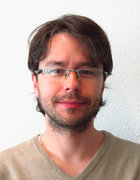
Eduardo Monfardini Penteado
Panel: Joana B. V. Marques
(Instituto de Astrofísica e Ciências do Espaço, University of Coimbra, Coimbra, Portugal), Mathias Jaeger
(Planetarium Mannheim), Joanna Holt
(Netherlands Research School for Astronomy (NOVA)), Elizabeth Tasker
(JAXA), Ola Ali
(National Research Institute of Astronomy & Geophysics), Somaya Saad
(National Research Institute of Astronomy and Geophysics (NRIAG)) -
A trip to the planetarium – the full experience
Wednesday Nov. 29, 2023
UTC: 11:15 a.m. - 11:25 a.m.Thursday Nov. 30, 2023
UTC: 6:45 p.m. - 6:55 p.m.A visit at a planetarium can be much more than watching an immersive video on the dome. It can be a live changing learning experience which leaves the students in awe! The Planetarium Mannheim hosts 15 000 students a year. With a newly developed format the students receive live presented and age adapted interactive shows, Q&A sessions with an astronomer, as well as online material for preparation or follow-up learning experiences in the class room. This talk presents how this how this new type of full planetarium experience was set up, the advantages and disadvantages as well as the challenges which had to be faced.
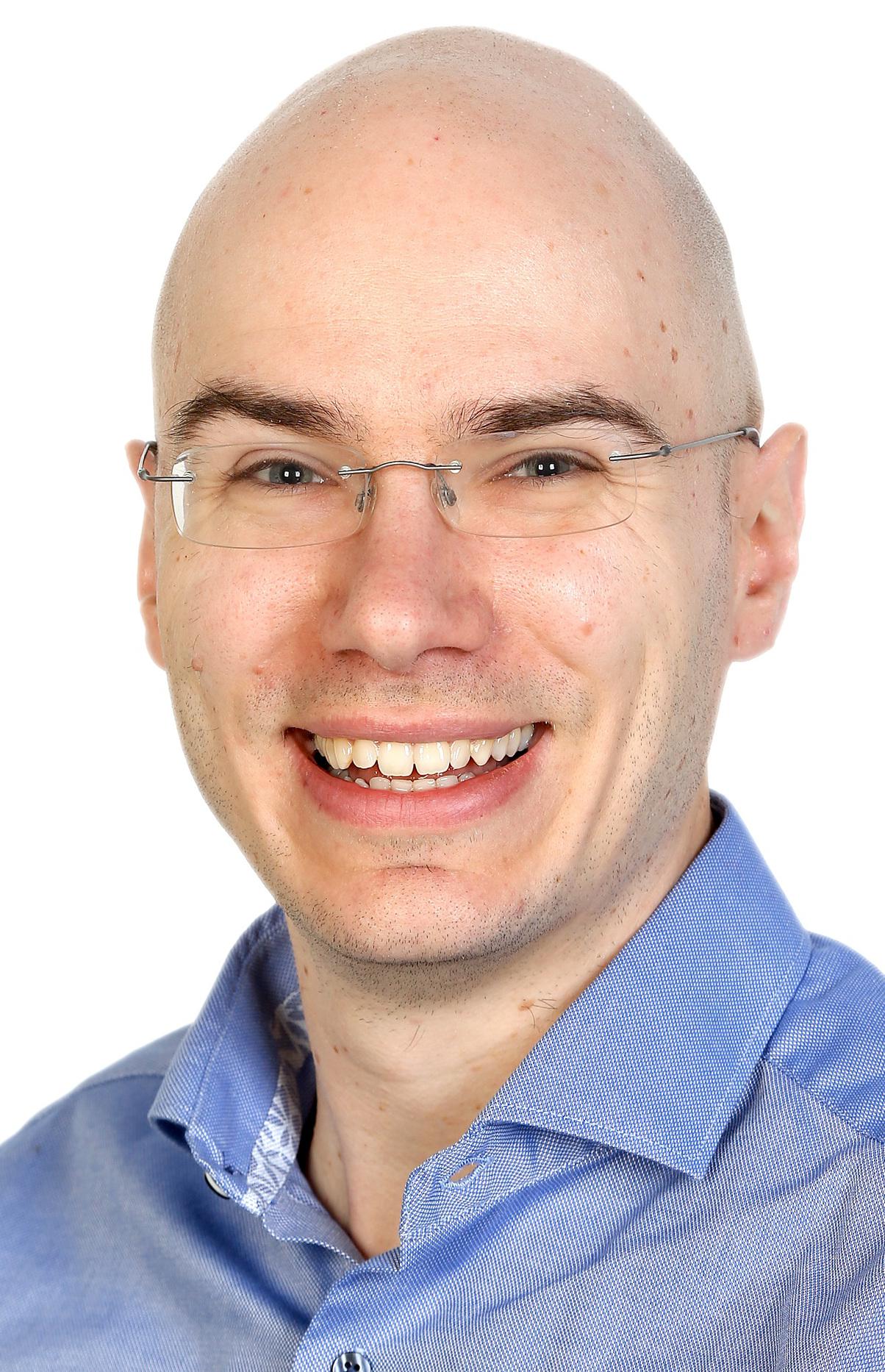
Mathias Jaeger (Planetarium Mannheim)
For more information about this talk click here
-
Making a successful STEM project inclusive
Wednesday Nov. 29, 2023
UTC: 11:25 a.m. - 11:35 a.m.Thursday Nov. 30, 2023
UTC: 6:55 p.m. - 7:05 p.m.The NOVA Mobile Planetarium strives to give all children in the Netherlands an unforgettable STEM experience during their school career. Since 2009, the project has inspired almost 500,000 school students across the Netherlands. The NOVA approach has real impact on its visitors as the shows are fully live and interactive. Recent collaborations with planetarium projects around the world are broadening the reach of the NOVA vision further. By any standard metric, a success story! However, self-reflection during the relative quiet of the Covid-19 pandemic revealed the project does not reach all areas and all demographics in the Netherlands – the project is not yet fully inclusive. In this talk, we outline the roadmap designed to turn the NOVA Mobile Planetarium into a truly inclusive project.
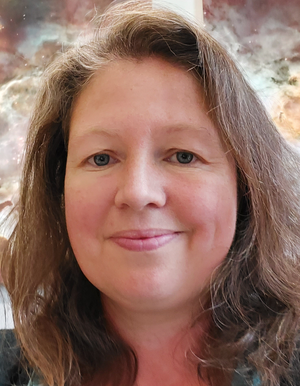
Joanna Holt (NOVA (Netherlands Research School for Astronomy) & AUAS (Amsterdam University of Applied Sciences))
Coauthors: Joris Hanse, Marieke Baan, Steven Bloemen, Jacco Vink, Ralph Wijers, Frans Snik, Sebastiaan de Vet, Jotte Hof, Frans Stravers, Judith Mulder
For more information about this talk click here
-
M is for Mars and Metaverse: Bringing new experiences to students through Virtual Reality education
Wednesday Nov. 29, 2023
UTC: 11:35 a.m. - 11:45 a.m.Thursday Nov. 30, 2023
UTC: 7:05 p.m. - 7:15 p.m.It is extremely fun to describe a star forming region while taking a trip through its centre. This was one of the motivations behind the Metavisionaries Academy summer program, which offers immersive classes in virtual reality on astrophysics & space exploration. The students were from high school to undergraduate level, and could join the class from anywhere in the world, via either a VR headset, computer or smartphone. Lectures were designed to harness the virtual space by bringing in models, exploring environments such as the Moon & Mars, and utilising 360° videos to offer a program that is not possible in a traditional classroom. We look at the challenges of moving from 2D presentations to creating a 3D experience as a lecturer, and how this is a tool to reach people around the globe.
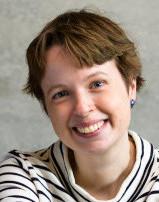
Elizabeth Tasker (JAXA)
Coauthors: Jim Green (Metavisionaries), Trudi Hoogenboom (Astra Nova School), Wasim Ahmed (Metavisionaries)
For more information about this talk click here
-
Astronomy teaching through Astrcamps, Crafting, and DIY Astronomy Projects
Wednesday Nov. 29, 2023
UTC: 11:45 a.m. - noonThursday Nov. 30, 2023
UTC: 7:15 p.m. - 7:30 p.m.In Egypt, Astronomy is neither a fundamental subject nor part of a science subject for most school years. So finding new ways to disseminate astronomy knowledge to students becomes mandatory. In this talk, I’ll present the experience of teaching astronomy outside schools. Me and my colleagues through our work in our institute conducted a lot of Astrcamps, to Kottamia Observatory, the Nature reserves, deserts, and even youth clubs, We had programs dedicated to different ages. We had many workshops with Crafting, and DIY Astronomy Projects to promote astronomy, These activities got the attention of students ages 5 to 12 especially. Also, we have been presented at the Cairo International book fair yearly since 2017 to introduce astronomy to the public and announce our activities.
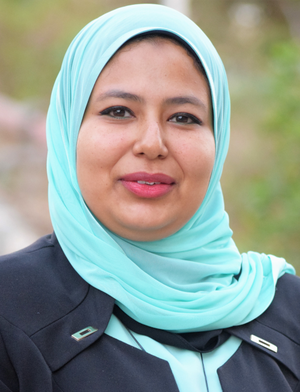
Ola Ali (National Research Institute of Astronomy and Geophysics)
For more information about this talk click here
-
Outdoor Practical Astronomy Education: OAE-Egypt Projects
Wednesday Nov. 29, 2023
UTC: noon - Tuesday Nov. 29, 2022 12:10 p.m.Thursday Nov. 30, 2023
UTC: 7:30 p.m. - Wednesday Nov. 30, 2022 7:40 p.m.We sharing the main projects of the OAE-Egypt in the fields of astronomy practical education. We practices the Astronomy education outside classes using various practices: 1-The Virtual Reality (VR) is a powerful educational tool that can be used to change the way students learn about astronomy by providing an experiences and simulation that enhances their understanding. 2- Desert trips and Night camps to monitor planets and stars in the sky. 3- Planetarium shows using the projection of the astronomical programs. 4- Tourist astronomy to maximize the benefits from the architectural astronomical heritage in Egypt to spread the basic concepts of astronomy in an expanded manner that includes a large number of Egyptian cities.
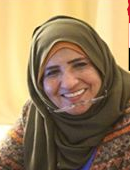
Somaya Saad (National Reserch Institute of Astronomy and Geophysics, NRIAG)
For more information about this talk click here
-
Amateur Astronomers Adjust Engagement Stylesfor New Generations
Wednesday Nov. 29, 2023
UTC: 3:35 p.m. - 3:55 p.m.Thursday Nov. 30, 2023
UTC: 2:35 p.m. - 2:55 p.m.While many amateur astronomers in the US and UK were inspired by the Apollo space race of the 1960s, the educational landscape has changed dramatically since then. As the local link between astronomers and the general public, astronomy enthusiasts can learn much from the latest pedagogy research. Reaching the broadest audience has great implications for the future of astronomy - both the hobby and the career. Hear 3 simple tips and where to find out more in this session.
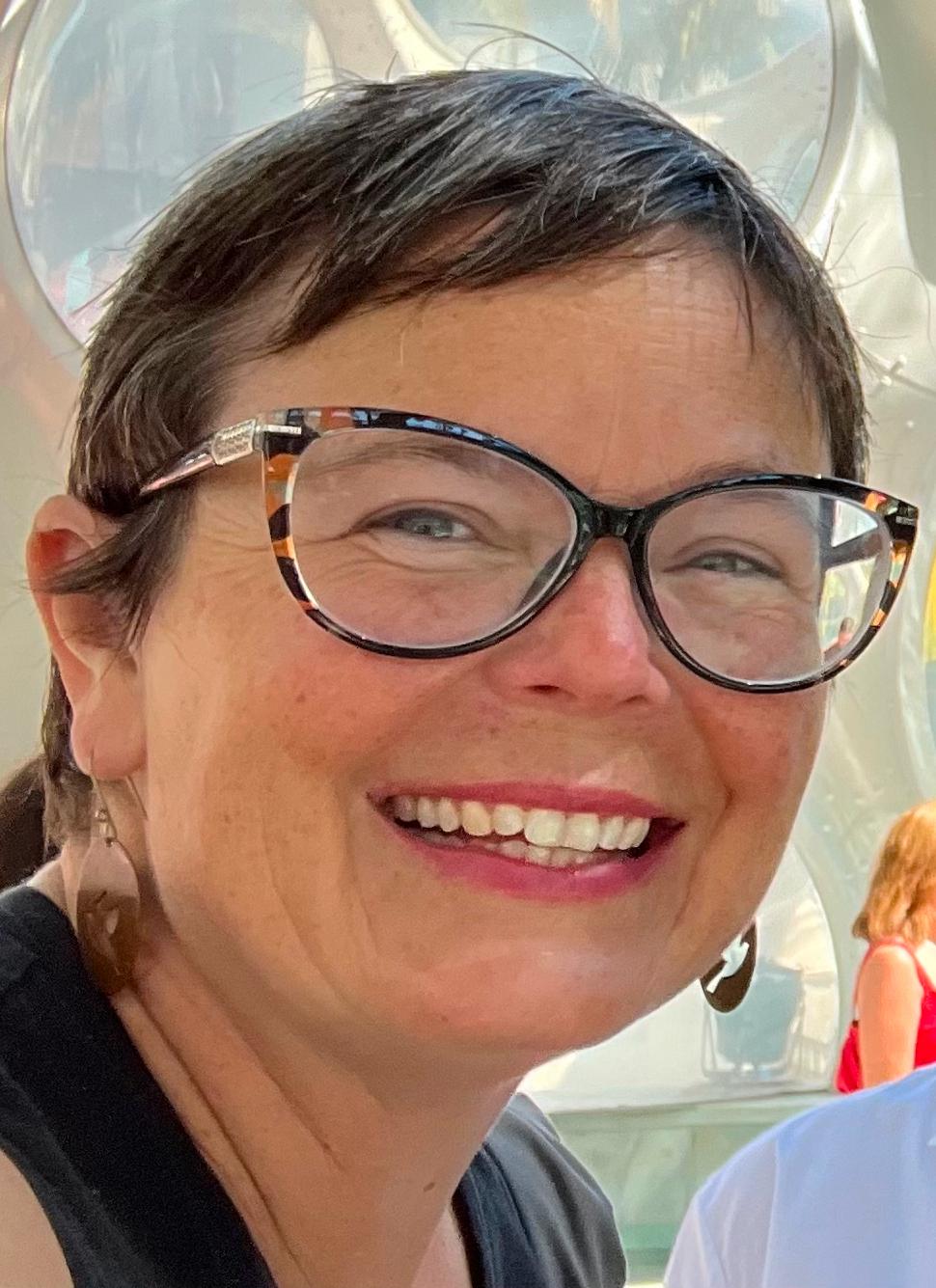
Vivian White (Astronomical Society of the Pacific)
For more information about this talk click here
-
Astronomy outreach and mobile libraries. Bringing Science to new audience and new audience to books
Wednesday Nov. 29, 2023
UTC: 3:55 p.m. - 4:10 p.m.Thursday Nov. 30, 2023
UTC: 2:55 p.m. - 3:10 p.m.During the last edition of Festival de la Astronomía TRIBU some Astronomy experiences were accompanied by a mobile library. Quantitative and qualitative results are shared. The importance of reaching new places to capture new audiences is analyzed, as well as the importance of using a simple and friendly approach with non-experts in science. At the end, the comments received from the public are shared about the aspects that most caught their attention. We found that bringing new experiences to places, specially in rural areas takes the attention of a lot of people because these experiences are really not common in Mexico and also because stargazing is naturally attractive among people.

Cuauhtemoc Mendez (Tec de Monterrey / TRIBU cultura astronómica)
For more information about this talk click here
-
Astronomy for Equity, Providing Opportunities in STEM to the Unserved through Astronomy
Wednesday Nov. 29, 2023
UTC: 4:10 p.m. - 4:25 p.m.Thursday Nov. 30, 2023
UTC: 3:10 p.m. - 3:25 p.m.Astronomy for Equity is a new initiative under the NGO Blue Marble Space that uses astronomy to provide opportunities for marginalized communities through astronomy. A remote observing program that provides research-type project experience has just started with students at a university in Benghazi, students of an astronomy club in Afghanistan. Students in schools in Ukraine will be involved soon. While this project may be considered to be informal education, it is augmenting the formal education programs of students who would not otherwise have the experience of a research-type project. Resources for teaching astronomy to the blind and visually impaired and experienced practitioners are being brought together with astronomy clubs worldwide to train hundreds, if not thousands, of outreach amateur astronomers to include this community in their ongoing activities. Telescopes have been acquired through crowdfunding for astronomy clubs in five cities in Libya that have the support of a Libyan astronomy NGO and the Education Ministry but couldn't acquire telescopes. Telescopes are en route to astronomy students in Ukraine. Fundraising through the sale of eclipse glasses for the annular in the US in 2023 will include sales of glasses purchased for donation to STEM students at schools in indigenous communities. This program will be extended to more schools for the 2024 total eclipse. Other programs are slated that will also use existing resources to address the problems of resource underutilization, lack of expertise across community borders, and even awareness of potential pathways to STEM careers. These conditions are an unfortunately common for most of the world's potential STEM students. There are young people everywhere with the ability to shine and make a difference in their communities and in many STEM fields who just never get the chance. These communities are the unserved, beyond the reach of NGOs providing services for underserved communities. For lack of the any of even the most basic opportunities, these talents go to waste. Local solutions are needed to build local infrastructure, starting with human capacity, to not only provide STEM education but to create an environment where the people value that education and where all students can take part.

Mike Simmons (Astronomy for Equity, an initiative of Blue Marble Space)
For more information about this talk click here
-
Astronomy for non-astronomers
Wednesday Nov. 29, 2023
UTC: 4:25 p.m. - 4:35 p.m.Thursday Nov. 30, 2023
UTC: 3:25 p.m. - 3:35 p.m.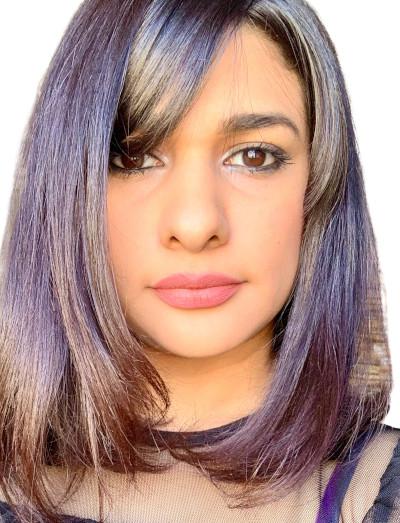
Myriam Alqassab (Bahrain Stargazers Astronomy Club)
For more information about this talk click here
-
Discussion Panel: Amateur astronomy in a school setting
Wednesday Nov. 29, 2023UTC: 4:35 p.m. - 5 p.m.
Thursday Nov. 30, 2023
UTC: 3:35 p.m. - 4 p.m.Chair:
Panel: Vivian White , Cuauhtemoc Mendez
(Tec de Monterrey / TRIBU cultura astronómica), Mike Simmons
(Blue Marble Space Institute of Science), Myriam Alqassab -
Connect your class with science using Skype a Scientist
Wednesday Nov. 29, 2023
UTC: 5:35 p.m. - 5:55 p.m.Friday Dec. 1, 2023
UTC: 10:05 a.m. - 10:25 a.m.Skype a Scientist is an informal science education nonprofit that matches scientists with classrooms, scout troops, and libraries for Q&A sessions about science for free! In this program tutorial, Dr. Sarah McAnulty will explain how teachers can get the most out this program.
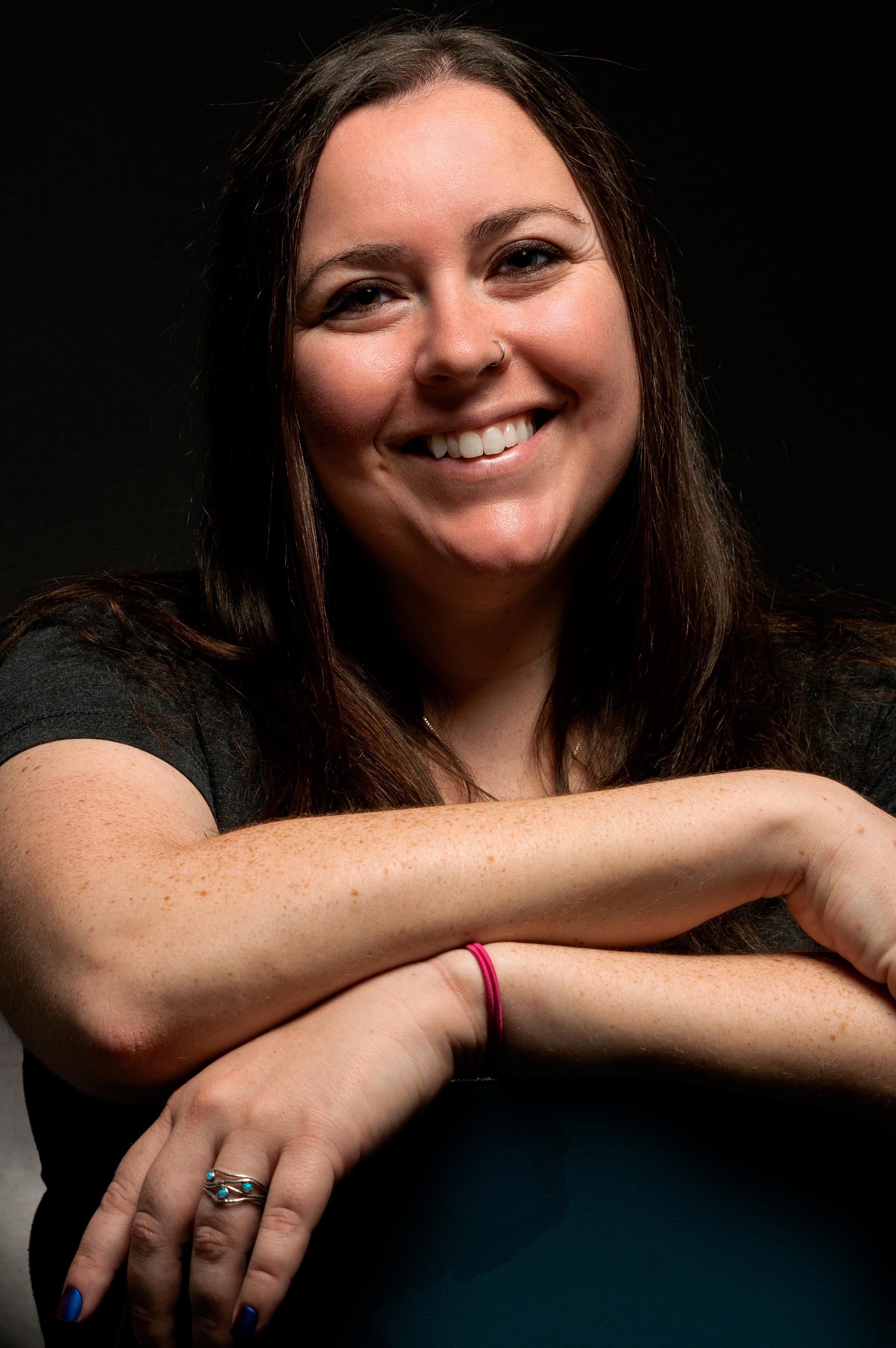
Sarah McAnulty (Skype a Scientist)
For more information about this talk click here
-
Astronomy Learning Community: Fostering Research in High School Students
Wednesday Nov. 29, 2023
UTC: 5:55 p.m. - 6:05 p.m.Friday Dec. 1, 2023
UTC: 10:25 a.m. - 10:35 a.m.Introducing GWAM Astronomy Learning Community, uniting Chilean teachers and students. The goal is astronomy advancement via modeling and photometry. Weekly sessions explore key concepts, using modeling for research skills. The community fosters knowledge exchange, teamwork, and skill development. Results show enhanced engagement, interest, and understanding. GWAM empowers high schoolers for autonomous astronomical research, bolstering Chilean education and nurturing future astronomers.
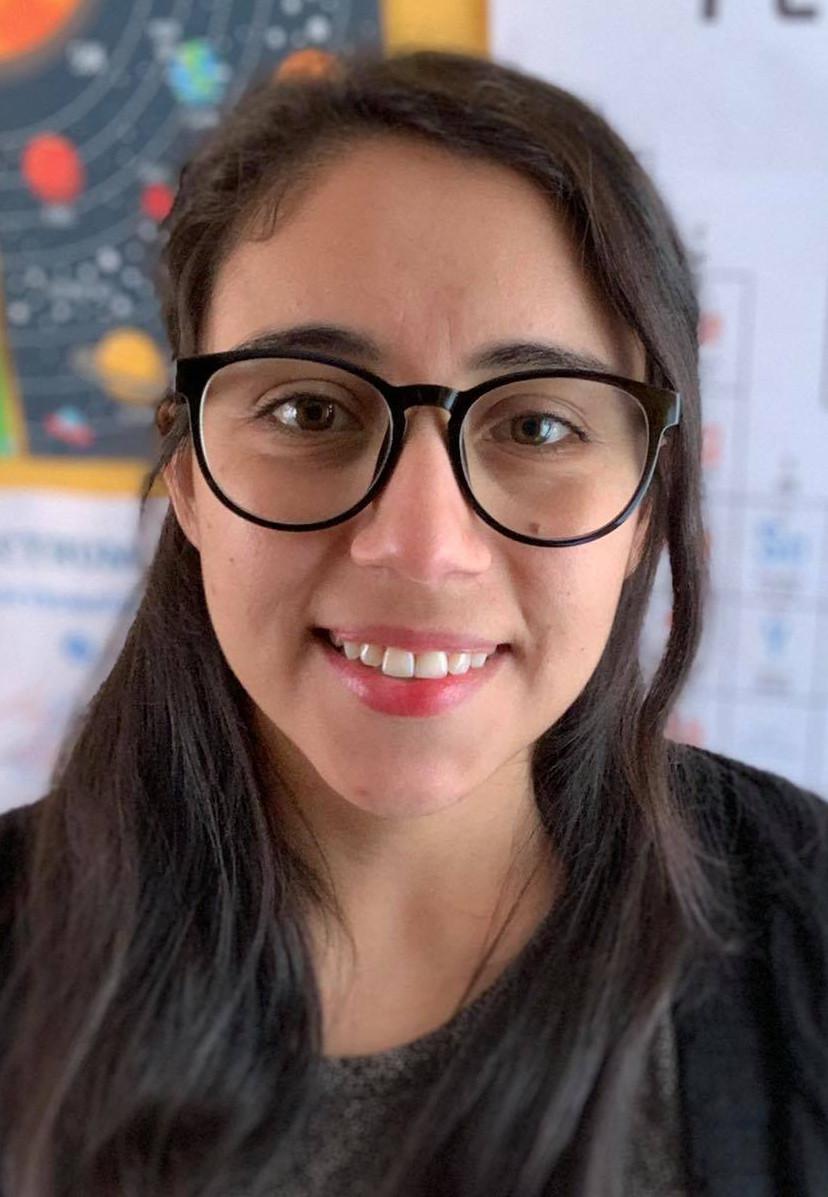
Elizabeth Villanueva (Global Hands-On Universe)
For more information about this talk click here
-
Gee-Whiz Astronomy Modelling – a worldwide online club opening doors to astronomy research
Wednesday Nov. 29, 2023
UTC: 6:05 p.m. - 6:15 p.m.Friday Dec. 1, 2023
UTC: 10:35 a.m. - 10:45 a.m.Gee-Whiz Astronomy Modelling (GWAM) works with students, teachers and scientists to develop open-ended (research-style) astronomy projects. Participants live and study in Chile, India, the United States and Wales and collaborate online synchronously for one hour every week at a time manageable to all (typically Fridays ~ 18 – 20 UT). Teachers and students alike learn how to collect and analyse astronomical images and datasets, to use and develop skills in free astronomical software and Python and to explore astronomical catalogs such as Gaia’s DR3 and the interactive data viewer and editor, TOPCAT. Students work both independently and collaboratively – transiting exoplanets, eclipsing binaries and open clusters are all currently areas of active study with papers in preparation.
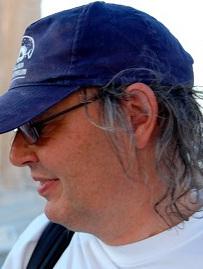
Fraser Lewis (Faulkes Telescope Project, Global Hands-On Universe, GWAM)
Coauthors: Elizabeth Villanueva (GWAM), Javier Larré (GWAM), Francisca Castro (GWAM), Isabel Martinez (GWAM), William Lee (GWAM), Reza AmirArjomand (GWAM), Mani Afshar (GWAM), Bonnie Thurber (GWAM; Global Hands-On Universe), Carl Pennypacker (Space Sciences Laboratory, University of California; Lawrence Berkeley Lab, University of California; Global Hands-On Universe)
For more information about this talk click here
-
Exploring Astronomy Education through Astrophotography: School Contest open for Everyone
Wednesday Nov. 29, 2023
UTC: 6:15 p.m. - 6:25 p.m.Friday Dec. 1, 2023
UTC: 10:45 a.m. - 10:55 a.m.In 2023 we run a first national astrophotography contest "Take a Photo of the Night Sky" that was intended for primary and high school pupils from Serbia, whom we invited to submit one photo in teams of no more than five pupils, under the supervision of a teacher. To enable equal participation for every school child we set as a requirement that only a mobile device (phone or tablet) can be used, and we provided an online training for all registered teams on how to make a successful photo of the night sky using a mobile device. We had 184 teams in the competition, including more than 1,400 pupils and 200 teachers from all over the country. We share our experiences, hoping to promote this format of astrophotography contest as astronomy education that may reach every school child in Serbia.
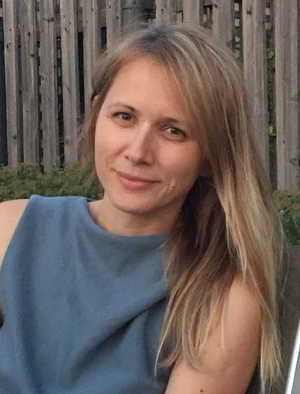
Dragana Ilić (Department of Astronomy, University of Belgrade – Faculty of Mathematics)
Coauthors: Marina Pavlović (Mathematica Institute, Serbian Academy of Sciences and Arts; NAEC Team Serbia; Society of Astronomers of Serbia), Jelena Kovačević Dojčinović (Astronomical Observatory Belgrade; NAEC Team Serbia; Society of Astronomers of Serbia), Milica Vučetić (Department of Astronomy, University of Belgrade – Faculty of Mathematics; NAEC Team Serbia; Society of Astronomers of Serbia), M.I. Jurkovic (Astronomical Observatory Belgrade, Society of Astronomers of Serbia), V. Kržalić (Society of Astronomers of Serbia), T. Prodanović (Department of Astronomy, University of Belgrade – Faculty of Mathematics; Society of Astronomers of Serbia), M. Sekulić (Astronomical Observatory Belgrade), Bojan Arbutina (Department of Astronomy, University of Belgrade – Faculty of Mathematics; NAEC Team Serbia; Society of Astronomers of Serbia), S. Milošević (Department of Astronomy, University of Belgrade – Faculty of Mathematics; NAEC Team Serbia; Society of Astronomers of Serbia)
For more information about this talk click here
-
ES Astronomy Exhibition
Wednesday Nov. 29, 2023
UTC: 6:25 p.m. - 6:40 p.m.Friday Dec. 1, 2023
UTC: 10:55 a.m. - 11:10 a.m.The ES Astronomy Exhibition (MAES) consists of the preparation of works on astronomy, with possible connections with related areas, by primary and secondary school students, under the guidance of a tutor-teacher. The works are evaluated by professors and researchers working in Physics and Astronomy. MAES seeks to cover the entire state of Espírito Santo. At the end of the Exhibition, students and teachers of the best classified works are awarded scholarships to continue proposed projects under the supervision of professors of university, specially UFES. Thus, MAES seeks, at the same time, to promote student protagonism and create an environment of integration between Basic Education and Higher Education.
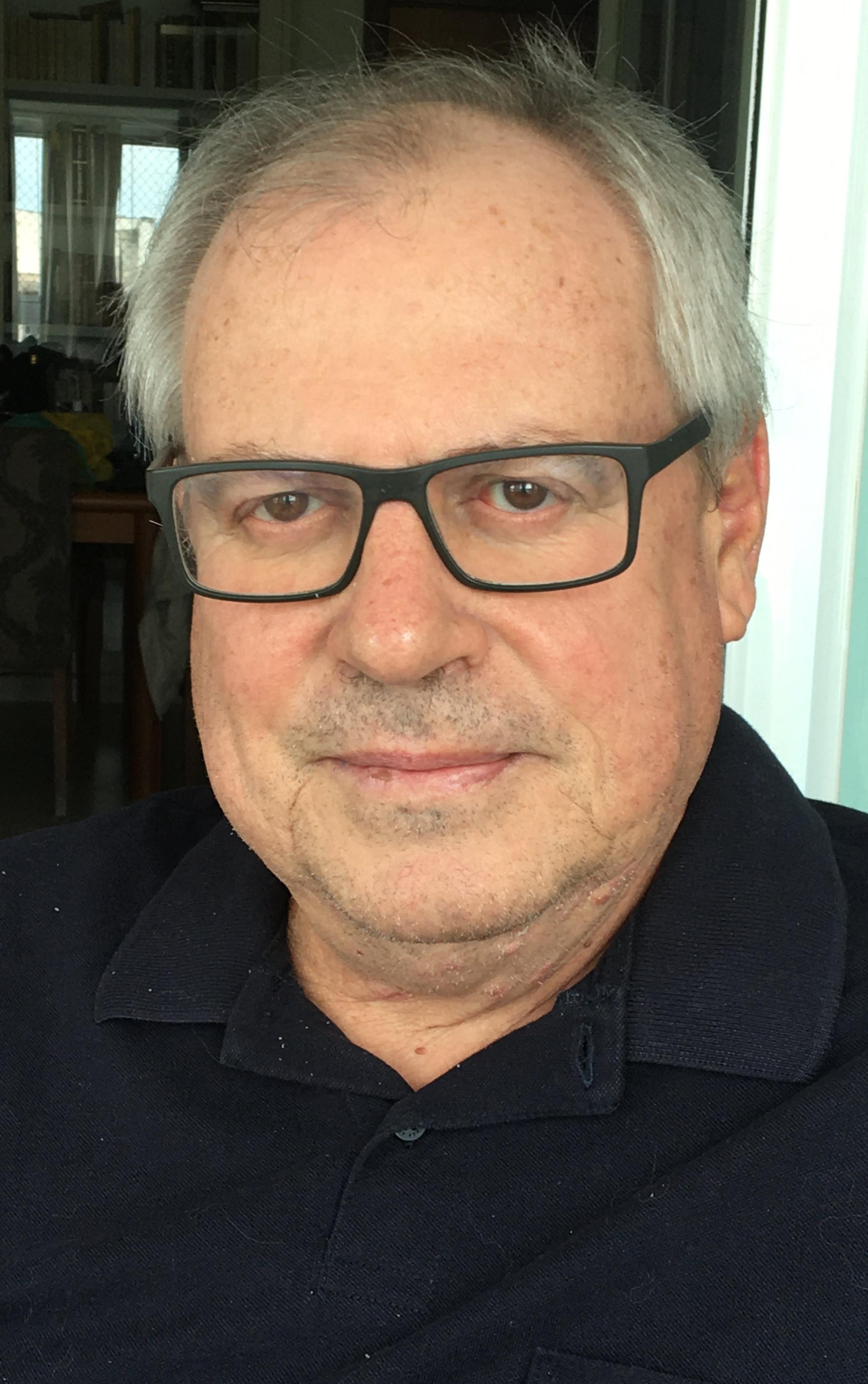
Julio Fabris (Federal University of Espírito Santo)
For more information about this talk click here
-
Discussion Panel: When scientists go back to school
Wednesday Nov. 29, 2023UTC: 6:40 p.m. - 7 p.m.
Friday Dec. 1, 2023
UTC: 11:10 a.m. - 11:30 a.m.Chair:
Panel: Sarah McAnulty , Elizabeth Villanueva
(Global Hands-On Universe), Fraser Lewis
(Faulkes Telescope Project and National Schools' Observatory), Dragana Ilić
(Department of Astronomy, Faculty of Mathematics, University of Belgrade), Julio Fabris
(Federal University of Espírito Santo) -
The Travelling Telescope
Wednesday Nov. 29, 2023
UTC: 8:05 p.m. - 8:20 p.m.Thursday Nov. 30, 2023
UTC: 12:35 p.m. - 12:50 p.m.The Travelling Telescope is a social enterprise dedicated to promoting science and technology using astronomy tools and concepts. We take our computerised portable telescope and mobile planetarium around Kenya and Tanzania educating the public about our universe and emphasizing the importance of protecting our fragile planet. We focus on two main areas, Education and Tourism. We are the youth partners of Airbus Foundation and have successfully completed robotic workshops with them. In addition to this we have delivered online 3D modelling workshops using Tinkercad, a product of autodesk. We also recently built a permanent planetarium with the dome built out of bamboo. This is the only permanent planetarium in East Africa.

Owen Susan Murabana (The Travelling Telescope)
For more information about this talk click here
-
Closer to the sky: co-creating astronomical knowledge in a favela of Rio de Janeiro
Wednesday Nov. 29, 2023
UTC: 8:20 p.m. - 8:30 p.m.Thursday Nov. 30, 2023
UTC: 12:50 p.m. - 1 p.m.The Closer to the Sky initiative fosters astronomy awareness within Brazilian "favelas." It harnesses astronomy's potential to uplift underprivileged children. Since 2022, educational sessions occur at the communal "Ninho das Águias" library, built by Pavão-Pavãozinho residents in Rio's PPG complex on a former landfill. The project, offers physics experiments and interactive games, aiming to propel youth growth through captivating astronomy. This outreach fosters inclusion, valuing community knowledge. It provides support and protection for PPG's children, nurturing their well-being.
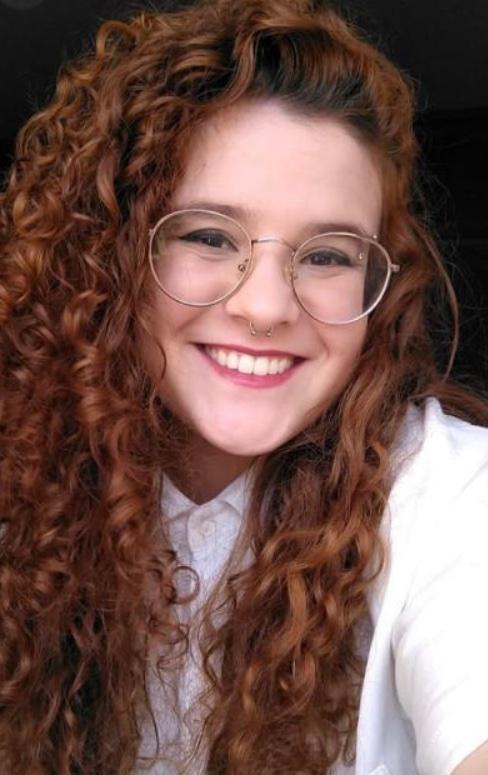
Maria Clara Heringer Lourenco
Coauthors: Arianna Cortesi, Gabriela Rufino, Claudia Mignone
For more information about this talk click here
-
A week in the life of a 15-year-old astrophysicist
Wednesday Nov. 29, 2023
UTC: 8:30 p.m. - 8:45 p.m.Thursday Nov. 30, 2023
UTC: 1 p.m. - 1:15 p.m.Students in high school in Australia undertake five days of work experience in any field, most commonly while in the tenth grade. The astrophysics group at the University of Melbourne has hosted these students since the 1990s, evolving from a handful of students each year into a structured program that hosted over 30 students in 2023. These students attend regular talks and colloquia in the astrophysics group, along with classes on different techniques in astrophysics, and complete their own short research project. Their work leads up to a final poster session with students in other science areas. I will discuss the evolution of this programme, outcomes for the student workers, and the benefits from the program to the university community.
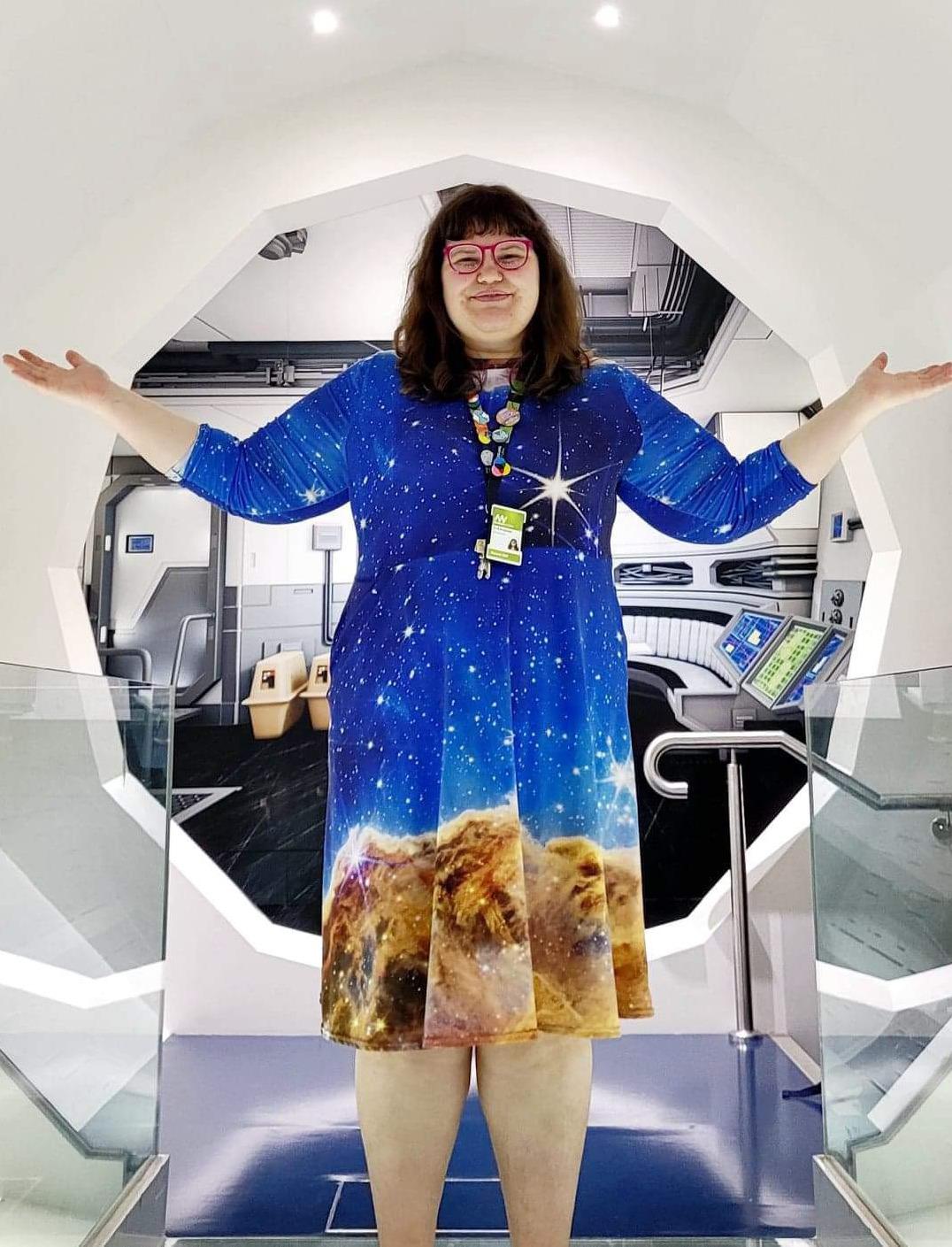
Stephanie Bernard (University of Melbourne School of Physics)
For more information about this talk click here
-
GalileoMobile: Lessons learnt from a volunteer outreach initiative sharing astronomy with communities across the world
Wednesday Nov. 29, 2023
UTC: 8:45 p.m. - 9 p.m.Thursday Nov. 30, 2023
UTC: 1:15 p.m. - 1:30 p.m.GalileoMobile is a volunteer astronomy outreach initiative that shares astronomy with students and teachers in communities worldwide. Since its inception in 2008, the GalileoMobile initiative - composed of a group of volunteer astronomers, educators and science communicators around the world - has reached 2,500 teachers and 20,000 students from 15 countries providing different communities with the tools to run astronomical activities independently, facilitating their sustainability through teacher workshops and community building. In this talk, we will give an overview of GalileoMobile's vision, major achievements, challenges and lessons learnt.

Jorge Rivero González (Institute of Space Sciences (ICE-CSIC))
For more information about this talk click here
-
Discussion Panel: When scientists go back to school
Wednesday Nov. 29, 2023UTC: 9 p.m. - 9:30 p.m.
Thursday Nov. 30, 2023
UTC: 1:30 p.m. - 2 p.m.Chair:

Tshiamiso Makwela

Eduardo Monfardini Penteado
Panel: Owen Susan Murabana
(The Travelling Telescope), Maria Clara Heringer Lourenco , Stephanie Bernard
(University of Melbourne School of Physics), Jorge Rivero González
(Joint Institute for VLBI ERIC (JIVE)) -
The Power of Astronomy Museums
Thursday Nov. 30, 2023
UTC: 8:35 p.m. - 8:55 p.m.Friday Dec. 1, 2023
UTC: 12:35 p.m. - 12:55 p.m.Astronomy Museums serve not only as repositories for the wonders of the universe, but also as catalysts for exploration, inspiration, and transformative learning. These spaces represent a convergence of the past with the future, where science intersects with culture, and the power of education assumes a cosmic dimension. But, many of the important dimensions that museums hold are common dimensions in Astronomy Education. That is to say, our Astronomy Education initiatives can learn from Museum education and take advantage of the non-science aspects to engage with the various public.
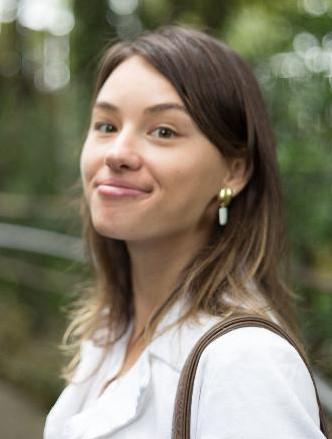
Patrícia Figueiró Spinelli (Museum of Astronomy and Related Sciences)
For more information about this talk click here
-
Rejuvenating Astronomy Education and Research at Yerkes Observatory
Thursday Nov. 30, 2023
UTC: 8:55 p.m. - 9:05 p.m.Friday Dec. 1, 2023
UTC: 12:55 p.m. - 1:05 p.m.Often called the birthplace of modern astrophysics, Yerkes Observatory maintained its status as one of the world’s premier astronomical observatories throughout the 20th century. Now, through leadership from Yerkes Future Foundation and support from the community, Yerkes is entering a period of rejuvenation. In an effort to reconnect communities across Wisconsin with Yerkes and the field of astronomy in a meaningful way, we are rebuilding Yerkes’ education and research programming. In this talk, we will highlight what we have done since taking over ownership in 2020 and provide insight into Yerkes’ plans for the future.

Mallory Conlon (Yerkes Observatory)
For more information about this talk click here
-
Quest-based activities for astronomy learning at an observatory visitor centre
Thursday Nov. 30, 2023
UTC: 9:05 p.m. - 9:15 p.m.Friday Dec. 1, 2023
UTC: 1:05 p.m. - 1:15 p.m.The inaugural exhibition at the new visitor centre at Onsala Space Observatory in Sweden was developed involving school classes in a co-creative process. To increase engagement for visiting classes and lowering thresholds for informal learning in astronomy, we have evaluated quest-based activity cards. We have explored different types of quests requiring different types of interaction with the exhibition. We find that while different age groups have widely diverging needs, the cards provide a good low-cost way of upgrading the experience at the exhibition for a large variety of visitors.
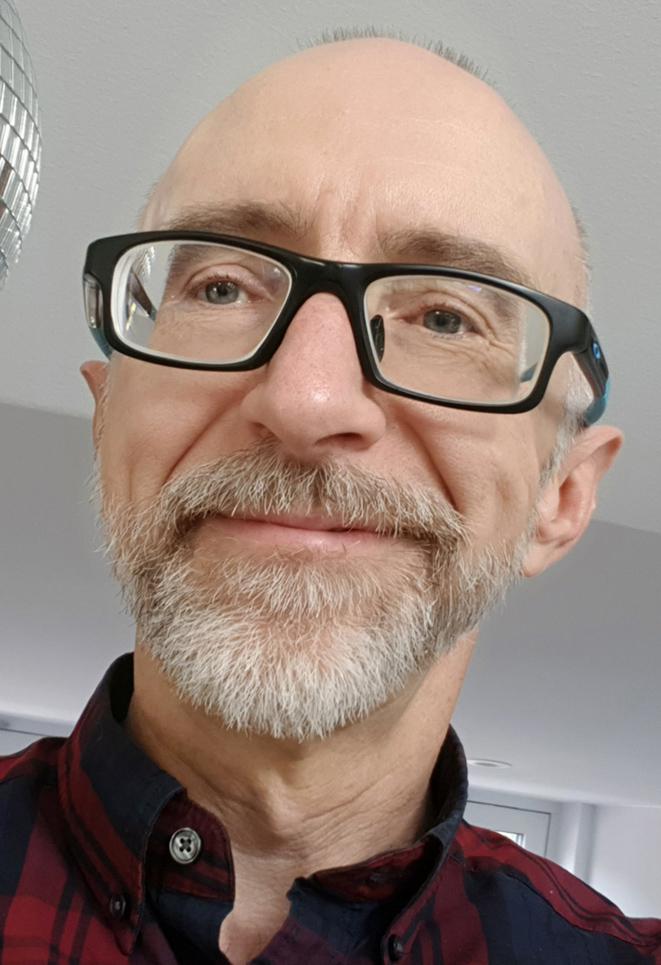
Robert Cumming (Onsala Space Observatory, Chalmers University of Technology)
Coauthors: Josef Wideström (Chalmers University of Technology)
For more information about this talk click here
-
Behavioural impact of visitors at the astronomy gallery in Regional Science Centre and Planetarium C
Thursday Nov. 30, 2023
UTC: 9:15 p.m. - 9:30 p.m.Friday Dec. 1, 2023
UTC: 1:15 p.m. - 1:30 p.m.Astronomy Galleries are public spaces where one expects to learn or relearn the general ideas from the varied topics of astronomy. Any science gallery unfolds the concepts of a topic as the visitors moves from one exhibit to another. The galleries are developed keeping in mind that after one completes a tour of the gallery, he or she develops a holistic understanding of the theme through their multisensory interaction with the exhibits in the gallery. People crave towards perceiving and assimilating findings and discoveries when presented in a planned, immersive and cohesive way. This talk reflects upon the decade long observed behavioral impact of visitors at the Astronomy gallery in RSCP Calicut.

Jayant Ganguly (Regional Science Centre and Planetarium Calicut)
For more information about this talk click here
-
Discussion Panel: Planetaria, Science Centers and Museums – interacting with formal education beyond the edutainment factor
Thursday Nov. 30, 2023UTC: 9:30 p.m. - 10 p.m.
Friday Dec. 1, 2023
UTC: 1:30 p.m. - 2 p.m.Chair:

Eduardo Monfardini Penteado
Panel: Patrícia Figueiró Spinelli
(Museum of Astronomy and Related Sciences - Science Communication and Education Department), Mallory Conlon
(Yerkes Observatory), Robert Cumming
(Onsala Space Observatory, Chalmers University of Technology), Jayant Ganguly
(Regional Science Centre and Planetarium Calicut)
Posters
-
Astronomy Education: Planetarium and Museum features
Ekaterina Tikhomirova (State Autonomous Cultural Institution of Yaroslavl Region Cultural and educational center named after Valentina V.Tereshkova)
The Cultural and educational center n.a. V.V.Tereshkova has the planetarium, the space museum, the Exposition Hall,the observatory and educational interactive classroom. The astronomy education and enlightenment in the example of the Center is considered.
-
Astronomy on TikTok
Prodanovic Tijana (Department of Astronomy, Faculty of Mathematics, University of Belgrade)
Besides being a researcher in the field of astrophysics for 20 years, I have also been a science communicator for 15 years. It s my feeling that in that time none of my efforts, and those include organizing science festivals and researchers night attended by 25k visitors, have resulted in such an impact as my TikTok educational astronomy profile (Dr Cosmic Ray) has. In this talk I will present some main benefits and potential that TikTok and similar platforms have for astronomy education in digital space.
-
Bridges Between Cultures: Activities and meetings about Cultural Astronomy (NASE)
Beatriz Garcia (National technological University, Faculty Mendoza), Ricardo Moreno (NASE. Colegio Retamar. Pozuelo de Alarcón, 28223 Madrid (Spain)), Rosa M. Ros (Technical University of Catalonia), Ederlinda Vinuales (University of Zaragoza, Grupo de Mecánica Espacial)
To commemorate the UNESCO International Day of Light, NASE proposes to all its participants, instructors and referents to carry out simple experiences but of great educational interest. Although the day of light is May 16, the activities can be done from the March to the September equinoxes. The idea started in 2018, inviting people to measure the invisible, performing the Herschel experiment to detect the infrared, and continuing each year until now with different topics. connecting Astronomy and everyday life. This new approach to concepts of Cultural Astronomy has permitted 2 meetings each year, the “Bridges Between Cultures” and “NASE+”. We present here some results of these activities and will show how simple experiences can transform the life of a lot of people on the Globe.
-
Communicating Astronomy through developing inhouse locally customized planetarium shows - Experience
Jayant Ganguly (Regional Science Centre and Planetarium Calicut)
Developing a good planetarium show is more of ‘Aesthetic Cognitivism’, it unfolds aspects of understanding the nature of the objects in the sky, it provides conceptual connections and engages visitors in identifying his or her self as a part of the physical whole - ‘stardust’. Here the presentation style, delivery, the light and shadow, the background music, the silence, the narrations and its density, the visual indicators and signifiers, the intention of the story developer … all matters. At Regional Science Centre and Planetarium Calicut (RSCPC), we developed 40 planetarium shows over a span of 27 years catering to the common adults, school and the culturally diverse public. This talk reflects upon our experiences and reflections.
-
Creating Astronomy Festivals at Outdoor Concerts and Tourist Sites (US National Mall with monuments and museums) – 100,000 people participated
Donald Lubowich (Hofstra University)
I describe to how to create large astronomy festivals: Music and Astronomy Under the Stars (MAUS - NASA funded, 60% families many with young children; 60% female; 20% seniors at mostly-free outdoor concerts (some organized by underserved communities) and The Astronomy Festival on the National Mall (AFNM, co-sponsored by the White House in 2010). These feature: solar, optical telescope observations; live-image projection; posters/banners/videos; demos, hands-on activities; citizen science projects; plus info on discoveries, careers, and science museums. AFNM is the largest annual astronomy outreach event in the US (30,000 people, 4-5 K/yr) with 120 educators from 30 scientific institutions, universities, and astronomy clubs (AAAS, AAS, AGU, APS, NASA, NASM, NOAA, NOAO, NRAO, NSF, The Planetary Society, STScI, Sky and Tel, USNO). Yo-Yo-Ma, the Chicago and Boston Symphony Orchestras, Ravi Coltrane, Phish, Blood Sweat and Tears, Deep Purple, Patti Smith, James Taylor, and Wilco performed at some MAUS events (1000 – 25,000 people/concert).
-
Exploring the Cosmos: Enriching Astronomy Education Beyond the Classroom
Abhi Raj (University of Delhi)
This study explores creative astronomy education methods, such as virtual observatories, citizen science initiatives, mobile planetariums, and interactive internet platforms, to enhance learning experiences outside traditional classroom settings. The research examines the impact of these techniques on students' conceptual knowledge, excitement for astronomy, and scientific inquiry abilities. The study also examines obstacles and advantages, such as accessibility, teacher training, and assessment. Adopting these techniques can foster a deeper appreciation for the universe, critical thinking abilities, and a lifetime enthusiasm for science.
-
Exploring the Frontiers of Space in 3D
Chris Impey (University of Arizona)
Immersive virtual reality provides an excellent way to experience astronomy facilities that the public generally cannot visit. Epic Games’ Unreal Engine has been used to create a 3D exhibit where visitors use a game controller to walk their avatars among cutting-edge optical and radio telescopes, with the Hubble and James Webb Space Telescopes hovering overhead. Several of the telescopes are animated. OSIRIS-Rex is seen next to a detailed and suitably scaled rendition of the Bennu asteroid, and part of the virtual real estate is textured as a Martian surface with several Mars missions included. Visits are self-guided with interactive posters giving the main scientific results of the various telescopes and missions.
-
Exploring the secrets of the cosmos on foot: Astronomy clubs and peripatetism.
José Antonio D'Santiago García (Universidad Nacional Experimental Rafael María Baralt)
Today in the traditional educational environment, the teaching of astronomy is often limited to the confines of the classroom, based on textbooks and theoretical explanations. This methodology can seem abstract and distant for students, who cannot directly experience celestial phenomena and their connection to the universe. But the world of astronomy is changing. The astronomy and peripatetic clubs, the latter an educational philosophy that proposes learning outside the classroom and in open spaces, using everything that surrounds us as we walk as the main resource for teaching, they have emerged as vehicles for teaching of astronomy beyond the classroom and bring it closer to tangible reality.
-
Facts to Equations & What!/Wow! to How?
Chrisphin Karthick (Indian Institute of Astrophysics)
While planning to educate astronomy outside the classroom, we must first distinguish with whom we teach, in what environment, etc. If the age group is at an education level, they can use it for a career path, and others can take it as a hobby and awareness. Besides regular talks and models, etc., we can make them work with maths, physics and problem-solving related to astronomy and space education in a fun way. We have to differentiate between facts learning and analytical thinking. All about explanation through models and related helps to know the truth and facts, but working with the problem induces their analytical thinking with enthusiasm. Hence, this allows either way of raising the interest in astronomy and also good at analytical thinking.
-
Home Astronomy for early childhood and its assessment
Tomita Akihiko (Wakayama University), Takuya Kotani (Osaka Ohtani University), Yoshiko Nagase (Osaka Ohtani University), Yukiko Takegawa (Science Planning Office for Kids), Hiromi Tsuji (Osaka Shoin Women’s University)
Young children interact with their surroundings, things, objects, and nature, and through “trying one more time,” they enjoy observing and building concepts. This is also the case for the subject of astronomy. We present records of the interests and behaviors of 3 to 5-year-old children regarding the evening sky, clouds, colors, rainbows, the first stars, and the movement of the stars. In addition, we present our study of the assessment methods used. We also discuss how such assessment is positioned within early childhood science education in general, and how it relates to science formal school education.
-
Park of Sunclocks in Horodnic De Jos - Romania
Elisabeta Ana Naghi (Nationa Education Ministry), Dimitrie Olenici
In Horodnic de Jos (Romania) since 2006 we can visit the Private Popular Planetarium From 2023, the planetarium with its specific activity, there we can find an open-air park with sundials, of various types: vertical, vertical with two sides - it shows the hours between 6 am and 6 pm on the southern face and on the northern face it can show the hours between 4-6 am and 6-8 pm in the summer, horizontal, equatorial and one human. In this place the public, the local community, tourists in the country and abroad come to learn to build sundials, to visit the table of time - which shows us the role of the Egyptian obelisk, the origin of the names of the days of the week and the zodiac signs. Visitors can also learn here about Earth Movements, hours, time zones and the equation of time.
-
Stargazing to Star-teaching: Effective Approaches for Astronomy Education in Action
Amoghavarsha N (Indian Institute of Astrophysics), R. Punith (IIA), Niruj Mohan Ramanujam (IIA), Shylaja B S (Jawaharlal Nehru Planetarium, Bengaluru, India), S Seetha (RRI), Annapurni Subramaniam (IIA)
"COSMOS" is the upcoming world's first commercial 8K-resolution LED dome planetarium in the city of Mysuru, Karnataka, India. While awaiting construction, the IIA has started a comprehensive education and outreach program in the city and its neighbourhoods. One of the main objectives is to use the LED dome to train students in data analysis using current data from telescopes, as well as to incorporate all major STEM events. We have started education & outreach programs in the district and aim to extend them to neighbouring districts as well. We are building a common platform for educators, science communicators, and other stakeholders in the area. In this talk, I will describe our programs, methodology, and their efficacy and end with future plans to use the facilities of the planetarium.
-
Students' International Network for Astronomy and its projects for sustainable development
Mahdi Rokni (Manager of Students' International Network for Astronomy (SINA)), Tomita Akihiko (University of Wakayama), Saba Izad (Students' International Network for Astronomy)
This network has been established by students in a small city in the south of Iran. It was a desire to globalize all the activities and plans that they have been carrying out in Mehr observatory. Some of these activities contain a lot of social skills and different methods for students to do. The main aims of this network are Involving students in astronomical programs and projects, preparing a reliable structure for students around the world to meet each other using astronomy as a link, using the methods of sustainable development to teach students about the global environmental concerns and world peace, letting students make friends with each other without limitation and introducing their own culture.
-
Trial of Various Astronomical Educational Applications in Japan, a Planetarim Nation
Agata Hidehiko (OAO IAU & NAOJ), Shoichi Itoh (Kunitachi Astronomical Observatory)
There are more than 350 planetarium facilities nationwide in Japan, with an estimated 9 million visitors per year. Planetariums have been important regional centers for astronomy education and promotion for the past 100 years. Of these, school education use accounts for about 20%. However, in addition, mobile planetariums for school visits are now widespread. Furthermore, the educational content taught using planetariums is also diversifying, and we would like to include some examples.
-
Unveiling the Celestial Narratives: Empowering Human Resources through Literary Exploration
Toyib Muchammad (Master Program of Human Resource Development, Postgraduate School of Universitas Airlangga; Surabaya Astronomy Club; East Java Amateur Astronomer Communication Forum (FOKALIS JATIM))
"Unveiling the Celestial Narratives: Empowering Human Resources through Literary Exploration" synergizes amateur astronomers and literary engagement to elevate education and personal growth. By blending science and writing, we nurture scientific literacy, critical thinking, and cross-disciplinary skills. Collaborative narratives bridge complex concepts and emotional resonance, fostering understanding and curiosity. This unique initiative also fosters cross-cultural connections, uniting diverse communities under the celestial canopy. Ultimately, we present a transformative model that enriches Indonesia's human resources, offering a profound cosmic perspective and nurturing a vibrant, interconnected society.




